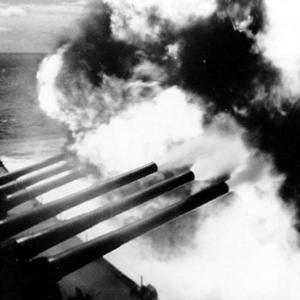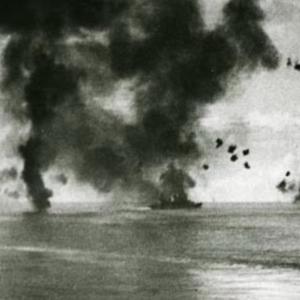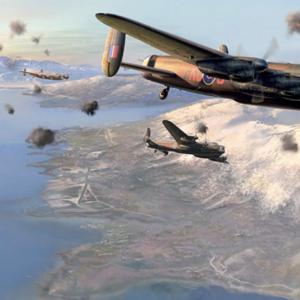
French Resistance
The French Resistance was a network of underground groups that opposed Nazi occupation in France during World War II. After France surrendered to Germany in June 1940, the country was split in two: the northern half was occupied by German forces, while the southern half was governed by the collaborationist Vichy regime. Despite this, many French citizens refused to accept defeat or foreign occupation and began organizing resistance efforts in secret.
Members of the Resistance came from diverse backgrounds. They included former soldiers, students, women, factory workers, civil servants, communists, Catholics, socialists, and conservatives. Their motivations varied—from deep patriotism and a desire to see France free again, to outrage over German brutality, anti-Semitic policies, and the collaboration of the Vichy government. Early in the war, the Resistance was small and scattered, but it grew significantly in strength and numbers as the war progressed, especially after 1942 when the Germans began forcing French workers into labor camps under the Service du Travail Obligatoire (STO) program.
At first, resistance efforts were disorganized. Different groups operated independently, often divided by region or political ideology. Notable early groups included Combat, Libération-Sud, and Francs-Tireurs et Partisans (FTP), a communist-aligned faction. Another major group, the Organisation de Résistance de l’Armée (ORA), was formed by former military officers loyal to France but not aligned with communism.
Efforts to unify these factions were led by Jean Moulin, a high-ranking official who had refused to work with the Vichy regime. Sent by General Charles de Gaulle from London in 1942, Moulin traveled secretly across France, meeting with resistance leaders to persuade them to cooperate under a single national organization. His work resulted in the formation of the Conseil National de la Résistance (CNR), a coordinating body that brought together the main resistance movements. Moulin was eventually captured by the Gestapo in 1943, brutally tortured, and killed without betraying his comrades. He became one of the most iconic heroes of the Resistance.
Charles de Gaulle, who led the Free French Forces from exile in London, became the symbolic and eventually political leader of the Resistance. Though he had little direct control in the early stages, his constant appeals for unity and defiance, broadcast through the BBC, helped rally public support in occupied France. Over time, more and more resistance members began to identify with the Free French cause under de Gaulle’s leadership.
The French Resistance carried out a wide range of activities that significantly disrupted the German war effort. They sabotaged railroads, communication lines, and industrial facilities. They gathered intelligence on German troop movements and military installations, which they relayed to Allied forces. Resistance members also distributed anti-Nazi leaflets and underground newspapers, painted graffiti to boost morale, and ran escape routes for Allied airmen, Jews, and political dissidents.
As the war progressed, especially in rural areas, more militant groups known as the Maquis formed. These guerrilla fighters often operated from forests and mountains, launching ambushes, cutting supply lines, and engaging German patrols. Many of the Maquis were young men avoiding forced labor in Germany. Their knowledge of local terrain gave them an advantage in resisting German operations.
Support from Britain was critical to the success of the Resistance. Much of the coordination came through the Special Operations Executive (SOE), a secret British agency formed by Winston Churchill with the goal of supporting and organizing resistance movements across Europe. The SOE trained and deployed agents—many of them fluent in French—who were parachuted into occupied France to train local fighters, organize sabotage missions, and coordinate arms drops.
Communication between Resistance groups and Britain was maintained through wireless radio transmissions using coded Morse code messages. These communications were dangerous—radio operators were constantly hunted by German direction-finding teams—but they were essential. The BBC also played a role, broadcasting coded messages such as “the dice is on the table” or “Jean has a long mustache,” which signaled to local groups that supplies were coming or that a mission should begin.
The British Royal Air Force, particularly using aircraft like the Lysander and Halifax, flew secret night missions over France to drop weapons, explosives, medical supplies, money, and even trained agents. These drops were carefully coordinated: Resistance members would mark the landing zones with lights or bonfires in specific patterns to guide the planes.
Some of the most famous agents working with the Resistance through the SOE included Violette Szabo, Noor Inayat Khan, and Nancy Wake. These women displayed remarkable courage and endured great hardship, often facing capture or death.
The Resistance had a major impact on the course of the war in France. Their sabotage of railways and communication lines helped slow down German reinforcements during the Allied landings in Normandy in June 1944. In the weeks that followed, Resistance fighters played a crucial role in uprisings across the country, helping to liberate towns and cities alongside Allied troops.
After the war, many Resistance members were honored as heroes, and their efforts became central to the national memory of France’s defiance and resilience. While some debates continue over the extent of their influence or the complexities of their actions, the legacy of the Resistance remains a powerful symbol of courage in the face of tyranny.










